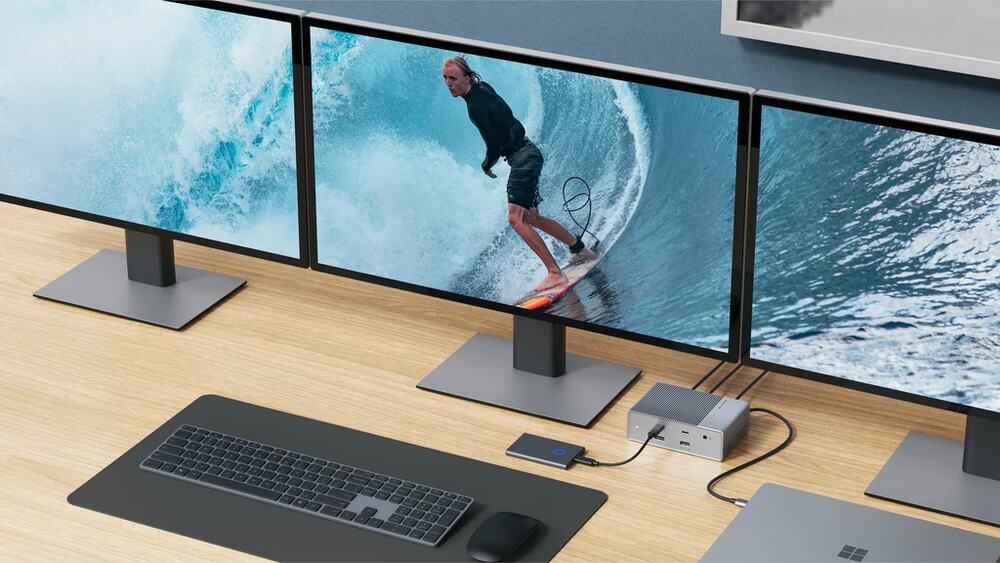
Creating a custom PC setup that fits your needs can be a challenge. Whether you’re using your setup for gaming, personal use, or business purposes, getting everything set up and running smoothly can feel like an exercise in frustration. For many less tech-savvy people, it’s a source of intimidation. But thankfully, we’re here to make the job a little easier by walking you through the basics of creating a dual monitor PC setup, including why you might want a multi-monitor setup to begin with, what hardware you need, and how to connect dual monitors so that you can breeze through the hard parts and get straight to the fun of actually enjoying your new setup.
Running a two or even three-monitor setup has several real benefits when it comes to improving your productivity and quality of life.

While choosing a second monitor might seem overwhelming, a good rule of thumb is to buy one as close to the specifications of your primary monitor as possible. You likely won’t go wrong by simply purchasing a second version of your primary monitor. Still, if that’s not an option, then the best advice is to find a monitor with the same resolution and size as your primary, as that preserves the DPI and real estate that you’re accustomed to across screens and makes switching between them an overall smoother experience.
Other factors to consider when choosing a monitor are:
When setting up a multi-monitor display, consider the limitations of your graphics card to avoid investing in an incompatible setup. While most modern GPUs support a dual monitor PC setup, adding three or more may prove challenging, so it's essential to check your GPU's monitor support capabilities.
You’ll also want to keep in mind the number of output ports your GPU has and which types of cables it will support. The most common cables for multi-monitor displays are HDMI, DisplayPort, and USB-C. Ensure that the type of cable your computer supports matches the one required by your monitor; otherwise, you'll need to add an adapter to your hardware. If you want to connect more monitors than your computer has outputs for, you should also check to see if the monitors you’ve selected support daisy chain setups.
One of the biggest concerns for figuring out how to connect dual monitors is space. Most desks have limited space for multiple monitors, making it a challenge to fit them without an overcrowded workspace. Luckily, there are a few different solutions for figuring out the space issue that don’t include simply purchasing a larger desk. While buying smaller screens might be a potential solution, you can also make the most of your space through items like a desk mount, a stand, or by using monitor arms.
Connecting a dual monitor PC setup is fairly simple once you’ve gathered all of the necessary equipment.

Once you’ve figured out how to connect your dual monitors, it’s time to configure your setup to match your preferences. To do this, you’ll want to navigate to the Display settings. You should see your connected monitors displayed as numbered boxes on the screen. From here, there are certain steps you’ll want to go through to make sure everything is configured the way you want it to be.
Inmatch the Display menu, you can configure the boxes representing each monitor to mirror how you have it set up in your workspace setup. Simply click on whichever monitor you want to position and drag it into the spot that represents its location in your physical workspace. If you’re unsure which box represents which monitor in your dual monitor PC setup, you can click “Identify” and each monitor will display its corresponding number.
Select the numbered box that represents the monitor you want to act as your main display. Once you’ve selected the monitor, scroll down, and there should be a check box labelled “Make this my main display.” Checking this box sets the selected monitor as your primary monitor. This is where your taskbar and Start menu will appear going forward.
In the same Display menu as before, click on the monitor whose settings you wish to adjust and scroll down to the “Display Resolution” dropdown menu. Select which resolutions you would like for that monitor and confirm the setting changes.
You can easily set how your dual monitor PC setup displays in the Display settings menu. Simply click on the “Multiple displays” dropdown and select from the following:
Now you should have a fully functional dual monitor PC setup and be ready to go. Use it to maximise your productivity and improve your digital experience, and remember that you can always change your configurations at any time if the current setup doesn’t serve you.